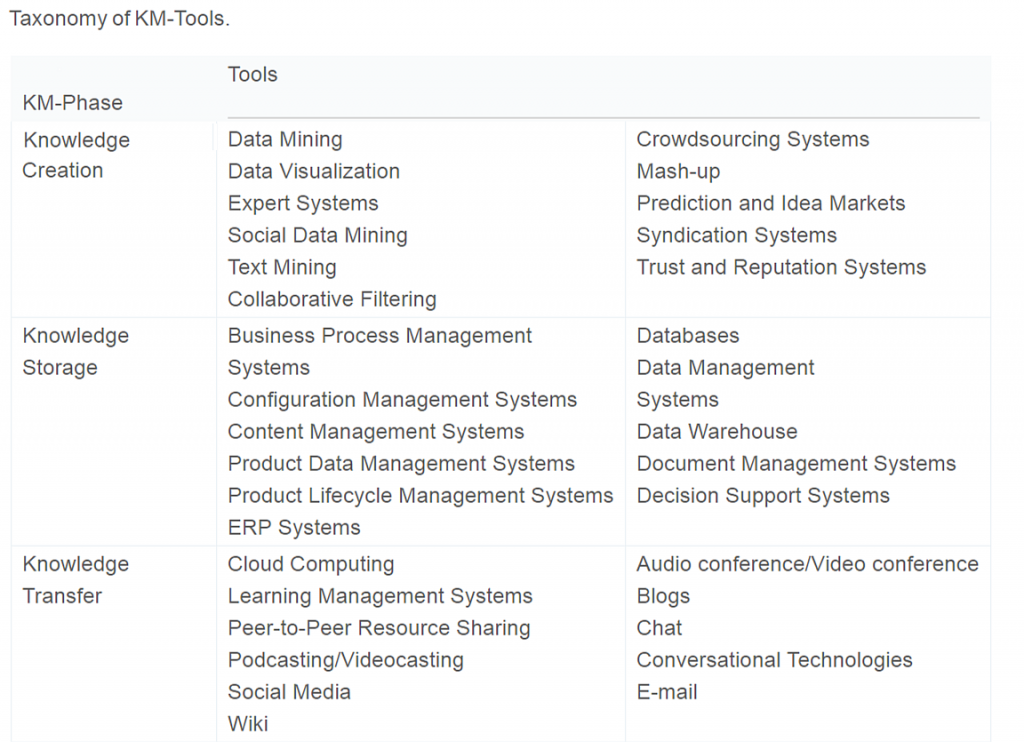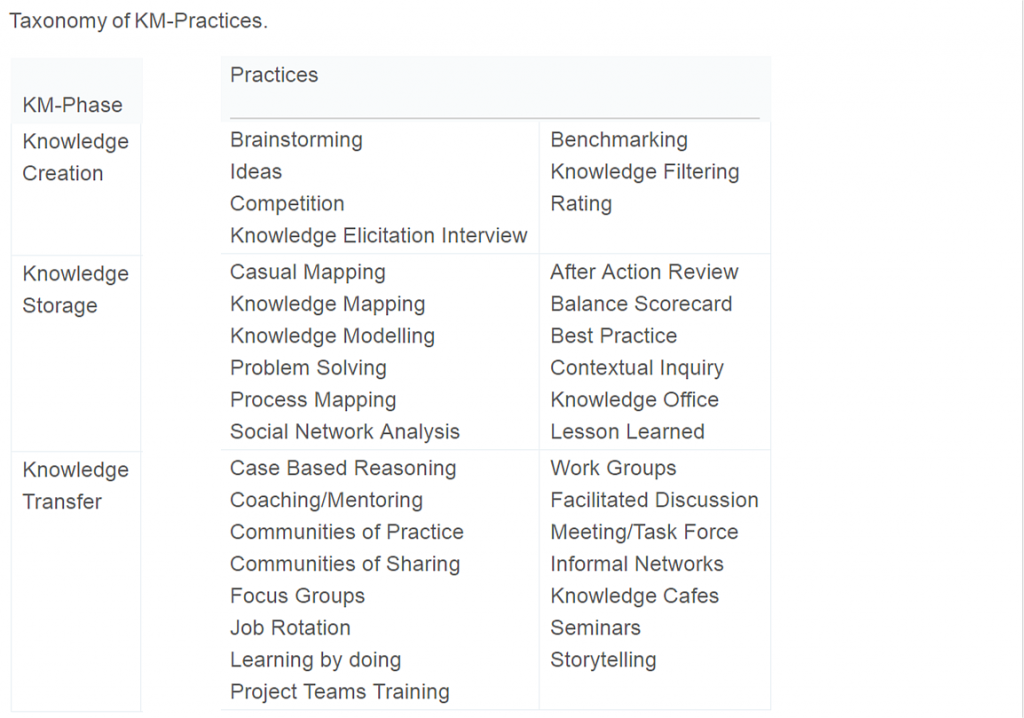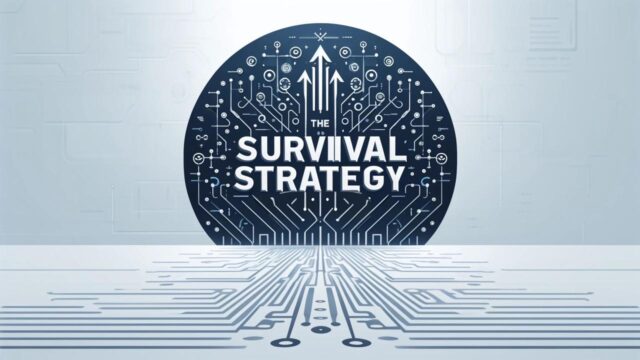
A taxonomy of small and medium enterprise (SME) strategies for using knowledge management systems
This article is part of a series looking at knowledge management (KM) in small and medium enterprises (SMEs).
While the pivotal role of knowledge management (KM) in the competitiveness of small and medium enterprises (SMEs) is widely recognised, SMEs are behind larger firms in regard to the development of KM practices. However, research into this topic is expanding rapidly.
A new paper1 identifies an exhaustive taxonomy of knowledge management systems used by SMEs, evaluates the intensity of their use, and proposes a taxonomy of SME strategies addressing the processes of knowledge management. This is achieved through a systematic literature review, consultation with a focus group of senior IT consultants/researchers operating in the field of SMEs , and semi-structured interviews with a sample of 61 selected SMEs.
Systematic literature review
The systematic literature review involved a paper selection phase and a content analysis phase. In the paper selection phase, a keyword search was conducted, followed by filtering using exclusion/inclusion criteria, and then categorisation. A total of 49 papers was selected for the subsequent content analysis phase.
Two perspectives were identified for the content analysis phase: the knowledge management process and knowledge management systems.
The knowledge management process was subdivided into three different phases:
- Creation phase, in which knowledge is acquired and validated.
- Storage phase, in which knowledge is retained and organised.
- Transfer phase, in which several actors exchange and share knowledge.
Knowledge management systems (KMSs) were divided into two categories:
- Knowledge management practices (KM-Practices), defined as the set of methods and techniques to support the organisational processes of knowledge creation, storage, and transfer.
- Knowledge management tools (KM-Tools), namely the specific IT-based systems supporting KM-Practices.
By overlapping the two perspectives, the 49 papers were classified into six areas and analysed in detail:
- KM-Tools supporting the knowledge creation phase. Three papers identified, which include discussion of the following: The use of innovative knowledge creation tools which allow SMEs to facilitate the creation of networks and manage the created knowledge efficiently and effectively.
- KM-Tools supporting the knowledge storage phase. Nine papers identified, which include discussion of the following: the opportunity offered by decision support systems for knowledge storage in SMEs; the use of enterprise resource planning (ERP); the adoption of a knowledge database to facilitate the process of knowledge storage; and a knowledge-based applications architecture based on the use of enterprise resource planning (ERP), customer relationship management (CRM), document management systems (DMS), and data warehouses (DW).
- KM-Tools supporting the knowledge transfer phase. Thirteen papers identified, which include discussion of the following: the opportunity offered by wikis; intranet and webpages as KMSs to support organisational learning; the use of communication tools (email, blog, content management system) and collaborative tools (social media); a prototype collaboration tool to improve the knowledge transfer phase.
- KM-Practices supporting the knowledge creation phase. Three papers identified, which include discussion of the following: the adoption of brainstorming as a very common team-oriented KM-Practice improving the knowledge creation phase.
- KM-Practices supporting the knowledge storage phase. Ten papers identified, which include discussion of the following: SMEs are more likely to adopt informal processes to manage knowledge; but also of importance are more formal practices and methods (such as: casual mapping, knowledge mapping, balance scorecards, formal manuals); and establishing a chief knowledge officer is also suggested.
- KM-Practices supporting the knowledge transfer phase. Seventeen papers identified, which include discussion of the following: a variety of people-centred practices such as focus groups, meetings, seminars, communities of practice, communities of sharing, informal networks, project teams, storytelling, interactions with customers, interactions with suppliers, interaction with partners, job rotation, training.
From the content analysis, it is evident that the literature on KMSs in SMEs focuses only on specific IT-based tools, formal practices, and people-centred practices. It does not take into consideration web-based tools, multi-agent systems, on-line auctions applications, semantic ontologies, and knowledge transfer practices. As well as giving an incomplete overview of the KM-Tools and KM-Practices used by SMEs to support the different phases in the knowledge management process, the literature does not highlight their degree of diffusion and their intensity of use. The point of view of individual SMEs also does not emerge.
Three research questions were formulated from the literature gaps:
RQ1: Which KM-tools and KM-Practices are used by SMEs?
RQ2: What is the degree of diffusion and the intensity of use of KM-Tools and KM-Practices among SMEs?
RQ3: What are the strategies for using KM-Tools and KM-Practices among SMEs?
Taxonomy of KM-Tools and KM-Practices
The first research question was answered through a three-phase process. Firstly, a list of knowledge management systems was obtained by integrating KMSs analysed in the literature and those proposed by other researchers. Secondly, the list was submitted to a focus group of senior IT consultants/researchers operating in the field of SMEs. A new list of KMSs was created, which was then divided into KM-Tools and KM-Practices. Thirdly, KM-Tools and KM-Practices were categorised according to the phases of the knowledge management process.
Table 1 and Table 2 present the resulting taxonomy of KM-Tools and KM-Practices.


Degree of diffusion and the intensity of use of KM-Tools and KM-Practices
To answer the second and third research questions, a field analysis was carried out on a sample of 61 SMEs located in the south of Italy, using the latest EU definition of SMEs proposed by the EU Commission.
Semi-structured interviews with the 61 SMEs revealed that they adopt and make more intensive use of traditional KM-Tools rather than new and more updated ones that are generally cheaper and easier to use. This could be the result of rapidly changing technologies, with SMEs generally lacking the resources needed to keep up to date with technological evolution. These scarce resources also mean that instead of investing in new practices geared to knowledge management, SMEs seek to adapt the practices they already know to the new requirements of knowledge management.
Strategies for using KM-Tools and KM-Practices
A relationship of reciprocity was found to exist between KM-Tools and KM-Practices: one reinforces the other and vice versa. The higher the number of KM-Practices an SME uses, the higher the number of KM-Tools they use. Similarly, the higher the intensity of use of KM-Practices by an SME, the higher the intensity of their use of KM-Tools. A negative relationship was found to exist between the number of KMSs (KM-Tools and KM-Practices) used by SMEs and their intensity of use.
A taxonomy synthesising the strategies of using KM-Practices and KM-Tools on the part of SMEs is proposed. Four strategies were identified:
- The guidepost is an SME with a perception of the strategic value of knowledge management and that explores the potential of a number of KM-Tools and KM-Practices, intensively exploiting them. Guidepost SMEs invest in order to improve the knowledge management process by adopting innovative KM-Tools and KM-Practices specifically dedicated to KM.
- The exploiter is an SME that intensively exploits the few KM-Practices and KM-Tools at its disposal. The SME exploiter has yet to become aware of the importance of investing resources in the field of KM. In fact, it uses mainly traditional KM-Tools and KM-Practices not specifically dedicated to KM.
- The explorer is an SME that, despite exploring the opportunities of a variety of KM-Practices and KM-Tools, is still not able to exploit them in full. Explorer SMEs use innovative KM-Tools and KM-Practices specifically dedicated to KM. They invest in the field of KM and through learning and training processes could become guidepost SMEs.
- The latecomer is an SME that is still unaware of the strategic value of knowledge management and still does not have the resources necessary to be competitive in the field of knowledge management.
The paper authors advise that SMEs could further increase the impact of KM by better exploiting the opportunities offered by new technologies such as cloud computing, crowdsourcing systems, collaborative filtering, and wikis. Because SMEs typically lack the resources needed to monitor KMS innovations, the authors encourage the creation of direct channels of communication between SMEs and KM providers, with SMEs potentially representing a significant market for KM providers.
Reference:
- Cerchione, R., & Esposito, E. (2016). Using knowledge management systems: A taxonomy of SME strategies. International Journal of Information Management. ↩
Also published on Medium.





Thanks for this article Bruce